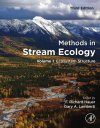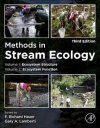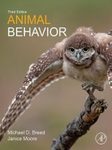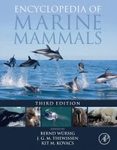About this book
Methods in Stream Ecology provides a complete series of field and laboratory protocols in stream ecology that are ideal for teaching or conducting research. This two-part new edition is updated to reflect recent advances in the technology associated with ecological assessment of streams, including remote sensing. Volume 1 focusses on ecosystem structure with in-depth sections on Physical Processes, Material Storage and Transport and Stream Biota. This third edition is key for all students and researchers in stream and freshwater ecology, freshwater biology, marine ecology, and river ecology. This text is also supportive as a supplementary text for courses in watershed ecology/science, hydrology, fluvial geomorphology, and landscape ecology.
Contents
Section A. Physical Processes
Introduction
Chapter 1. Riverscapes
Chapter 2. Valley Segments, Stream Reaches, and Channel Units
Chapter 3. Discharge Measurements and Streamflow Analysis
Chapter 4. Dynamics of Flowing Water
Chapter 5. Fluvial Geomorphic Processes
Chapter 6. Temperature
Chapter 7. Light
Chapter 8. Hyporheic Zones
Section B. Stream Biota
Introduction
Chapter 9. Heterotrophic Bacteria Production and Microbial Community Assessment
Chapter 10. Fungi: Biomass, Production, and Community Structure
Chapter 11. Benthic Stream Algae: Distribution and Structure
Chapter 12. Biomass and Pigments of Benthic Algae
Chapter 13. Macrophytes and Bryophytes
Chapter 14. Meiofauna
Chapter 15. Macroinvertebrates
Chapter 16. Fish Assemblages
Chapter 17. Amphibians and Reptiles
Section C. Community Interactions
Introduction
Chapter 18. Invertebrate Consumer-Resource Interactions
Chapter 19. Macroconsumer-Resource Interactions
Chapter 20. Trophic Relationships of Macroinvertebrates
Chapter 21. Macroinvertebrate Drift, Adult Insect Emergence and Oviposition
Chapter 22. Trophic Relations of Stream Fishes
Customer Reviews
Biography
F. Richard (Ric) Hauer, is Director of the University of Montana's Center for Integrated Research on the Environment (CIRE) and Professor of Stream Ecology at the Flathead Lake Biological Station where he taught Stream Ecology for >25 years. His major research interests encompass the broad, interdisciplinary field of ecosystem ecology with focus on freshwaters, especially running waters and gravel-bed river floodplains and wetlands. The breadth of his research spans from physical processes of sediment transport and groundwater/surface water interactions to aquatic insect life histories and ecosystem assessment. He is particularly interested in the application of remotely sensed data to understanding biophysical processes of floodplain ecology. To this end, he pilots his own airplane in the acquisition of digital imagery used to evaluate the landscape scale linkages between hydrology, geomorphology and ecology in river and floodplain ecosystems. Dr Hauer has conducted his research around the eastern Pacific-rim from Alaska to Patagonia; his primary research site being the transboundary Crown-of-the-Continent Ecosystem and the Flathead River of Montana and British Columbia. While it was the fascination with aquatic invertebrates, especially caddisflies, that captured his interest, it has been his love for streams and rivers as disproportionately important components of biodiversity of mountain landscapes that has maintained that passion. Dr Hauer has published >100 research articles in international peer-reviewed journals such as Science, Science Advances, BioScience and Freshwater Science. In addition to his personal research, he has served at the national level in developing environmental policy and implementation of environmental assessment in the Clean Water Act working with both the US Army Corps of Engineers and the US EPA. Ric is past-President of the international scientific society "Society for Freshwater Science." At the University of Montana, Hauer held the Stream Ecology Endowed Chair at Flathead Lake Biological Station from 2000-2016 and received the university's Distinguished Scholar Award in 2011. He is founding director of the university's interdisciplinary sciences graduate program, Systems Ecology.
Dr Gary A. Lamberti is Professor of Biological Sciences and Director of the Stream and Wetland Ecology Laboratory (SWEL) at the University of Notre Dame, where he teaches Biostatistics, Stream Ecology, Restoration Ecology, and a variety of topical graduate courses. His major research interests include (1) food web ecology of streams and wetlands, ranging from microbes to fish; (2) the ecology of native and introduced Pacific salmon; and (3) the impacts of climate change, toxins, and invasive species on aquatic ecosystem function. He retains a fundamental love for aquatic invertebrates, which permeates all of his research. He has also successfully advised 27 M.S. and PhD students to completion and countless undergraduates have conducted research in his laboratory. Dr Lamberti has over 175 publications dealing with various aspects of aquatic ecology, and has co-edited the Elsevier book entitled Methods in Stream Ecology, now in its 3rd edition. At Notre Dame, he also directs the GLOBES Graduate Certificate Program in Environment and Society. Dr Lamberti is a Fellow of the American Association for the Advancement of Science and past-President of the Society for Freshwater Science, an international society of aquatic ecologists.





































